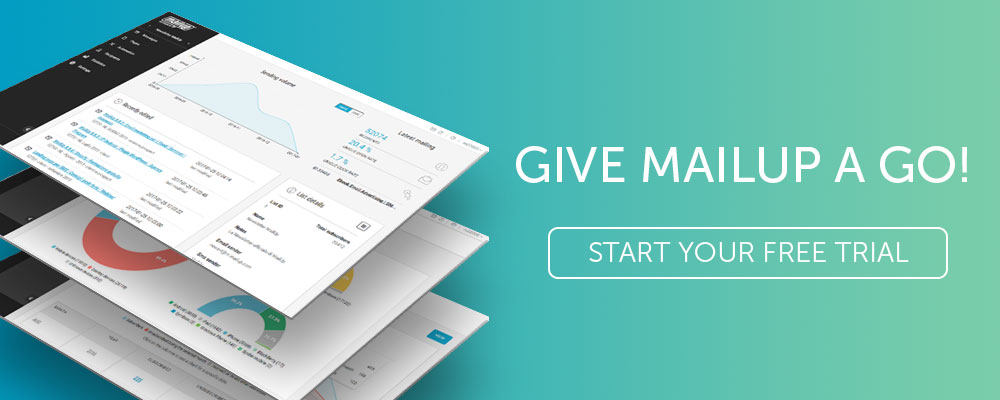Marketing Automation: What It Is And How To Use It

Within a marketing landscape that’s increasingly oriented towards having multiple channels and customized communications, automatic workflows offer companies an exceptional opportunity for growth. There are many motivations that drive companies to adopt Marketing Automation systems: automatic emails are instant, personalized, and extremely relevant to your recipient.
This boosted effectiveness of your campaign has direct results in terms of openings and click rates, which are higher and more frequent than in non-automatic communications. In turn, this positive trend translates into increased conversions and revenues for your company.
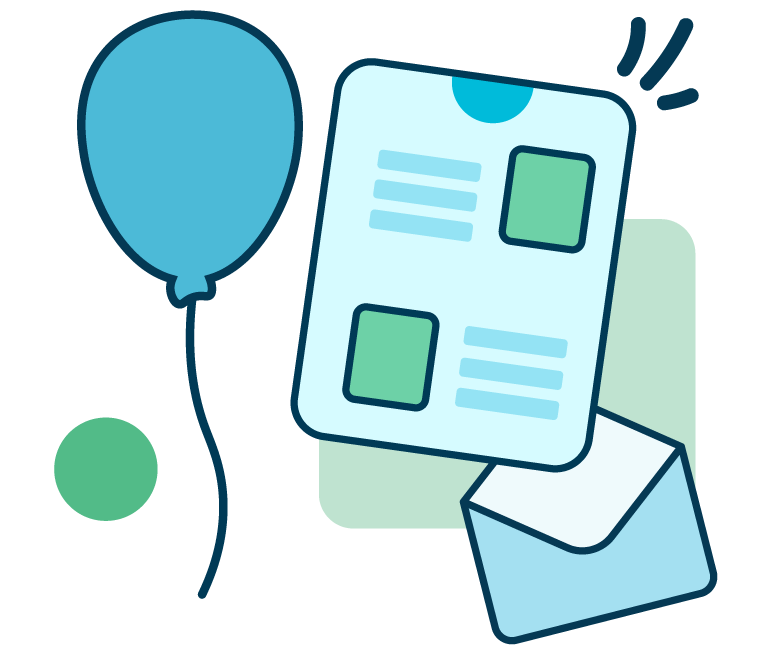
From developing integrations to strategic support, from creating creative concepts to optimizing results.
In this blog post, we’ll provide an in-depth explanation to reveal:
- What Marketing Automation is
- Which automatic campaigns can be built
- How to build an automatic flow in the MailUp platform
[twitter_quote text=”Marketing Automation replaces many separate systems with a single solution, thus simplifying processes” text_twitter=”Marketing Automation replaces many separate systems with a single solution” image_twitter=”https://blog.mailup.it/wp-content/uploads/twitter_icon.png” subtitle=”” image=””]
What is Marketing Automation, anyway?
Marketing Automation is the synthesis of a variety of complex activities with different tactical and operational goals that can be traced back to a final, triple goal: to personalize user experience as much as possible, create a personal conversation with each user, and ultimately maximize the ROI of each individual marketing channel.
It therefore comprises email and SMS campaigns that are automatically activated based on the actions and behaviors of users.

Unlike a one-shot promotional campaign, an automatic message is created and set up only once, and then sent to database contacts whenever certain conditions are met.
For example, if we were to create and manually send an email to all new newsletter subscribers, it would employ a considerable amount of time and resources. On the contrary, automatic deliveries speed up and simplify such marketing activities. This is the real advantage of an automated system: once you set up your rules and content, the system does all the work for you.
Creating an automated communication flow is simple and intuitive with MailUp. The platform features highly advanced and evolved Marketing Automation features – including the ability to create cross-channel workflows with email and SMS messages. Later on we’ll specifically show you how to set up a multi-channel automatic campaign. But before that…
Let’s clear up a bit of terminology
Confusion often arises when discussing automations, workflows, drip campaigns, and automated deliveries. Let’s try to clear all that up and dispel any doubts.
Marketing Automation: definition
Marketing Automation is a set of flows, technologies, and tools that allow for the automation – based on predefined triggers – and optimization of marketing efforts.
Workflow or automatic flow: definition
A workflow or automatic flow is the sequence of processes that govern the execution of an automatic campaign. A flow is defined as and consists of:
- The messages involved
- The waiting time between one message and another
- The conditions needed to trigger each message
Drip campaign: definition
Drip campaigns are simple and straightforward workflows in which a series of messages are automatically sent at a predefined rate. The distinctive feature of a drip campaign is its graphic and template uniformity. Here’s an example of a welcome drip campaign:
- [Immediately] Confirmation email for newsletter subscription
- [After 2 days] Selected content and in-depth information
- [After w Weeks] Request for feedback and other content
Triggered message: definition
Triggered messages are like a “broken” workflow, and lack connecting events and triggers. They are individual messages that are sent automatically when certain conditions are met.
Types of automatic campaigns
With Marketing Automation, it is possible to plan automatic deliveries of relevant content (and therefore interesting content) to predefined targets. In order to do this you much start by profiling and segmenting your database, then go on to build the automations that will be activated depending on users’ behavior. Below is a list of some automated campaigns that can easily be built:
Welcome series

A campaign that is activated after a newsletter or website subscription. You must initially create at least a double opt-in email and an authentic subscription confirmation email.
Abandoned cart recovery
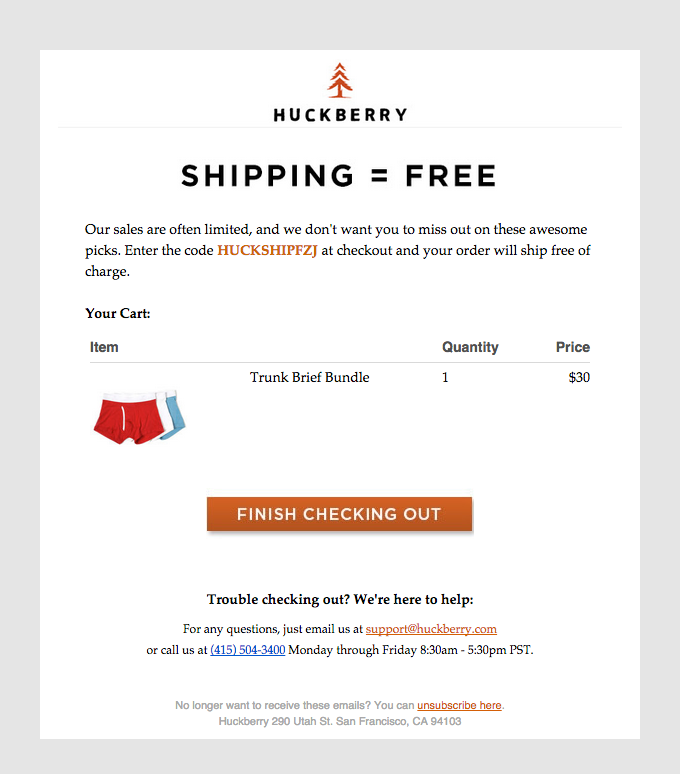
A campaign to encourage users to buy the products in their shopping cart if they abandoned it before completing the purchase. This is one of the most effective types of workflows, with some of the greatest economic returns.
First purchase feedback
A campaign sent to customers after their first purchase to “survey” their satisfaction and propose upselling and cross-selling products related to their first purchase.
Happy Birthday

An automated message sent on the user’s birthday with best wishes and a complimentary discount for stimulating engagement and encouraging an additional purchase.
Upselling and cross-selling
A campaign sent to customers for the sale of products/product categories the user has expressed preferences in through previous purchases, website navigation, or interaction in social networks, emails, live chats, etc. In this type of campaign, purchase data is crossed with behavioral data.
Best customer
A campaign sent to your best customers (most frequent and/or with high spending capabilities) to increase their loyalty and advocacy.
Reactivation or winback
A campaign for customers who haven’t made a purchase for a certain period of time, with the aim of ‘reactivating’ them and encouraging them to make another purchase.
Geolocation
A campaign sent based on your user’s location. This is especially useful for retail businesses that combine online sales with sales in their retail outlets.
How to create an automatic workflow with MailUp
The prerequisite for creating automatic campaigns is correct contact database profiling: without having users’ master data and information regarding their behavior, it’s impossible to determine the trigger variables that activate automatic flows.
To create automatic campaigns that are profiled based on interests, master data, and recipient activity, follow these 4 steps:
- Choose an initial event that triggers the start of a campaign
- Build the automatic email and SMS flow using the drag & drop interface
- Set specific restrictions by groups and filters or by date and time (for example time-frames when users shouldn’t be disturbed)
- Check the main statistics in real time and create an aggregate report for viewing the detailed statistics.
1. Choose the template
First you must choose whether to use:
- A pre-configured workflow based on a template that has already been set according to best practices, which can be customized as necessary.
- A custom workflow that is built by choosing one of several available initial conditions, a master data filter, or an existing activity filter.
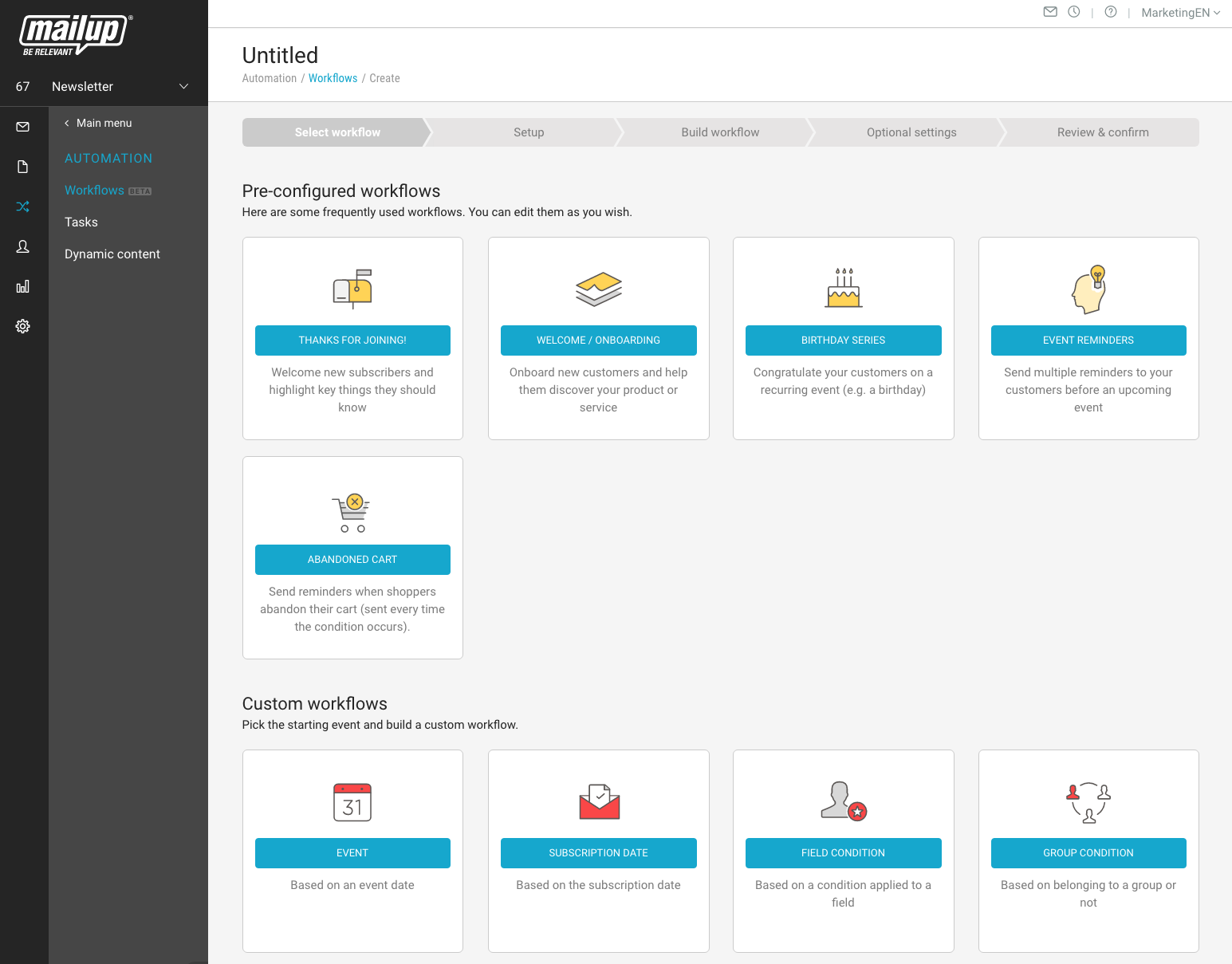
In this case, we’re going to choose a pre-configured happy birthday template and proceed.
2. Set the conditions
The second step is to set configuration or setup data (the same for all workflows) and the initial condition that triggers the workflow (different depending on the type of workflow: in this case, the recipient’s birth date).

3. Build the workflow
The convenient drag & drop interface is ideal for building an automatic flow in only a few minutes.
- Structure the email and SMS sequence by dragging the tabs on the left to inside the flow.
- Choose the messages you want to pair with each automatic delivery.
- Select the waiting time between the messages and the criterion that determines its calculation (i.e. by days/hours from the message’s delivery/opening/click/failed opening/etc.).
- Decide whether to copy or move recipients to a specific group once the workflow is complete.
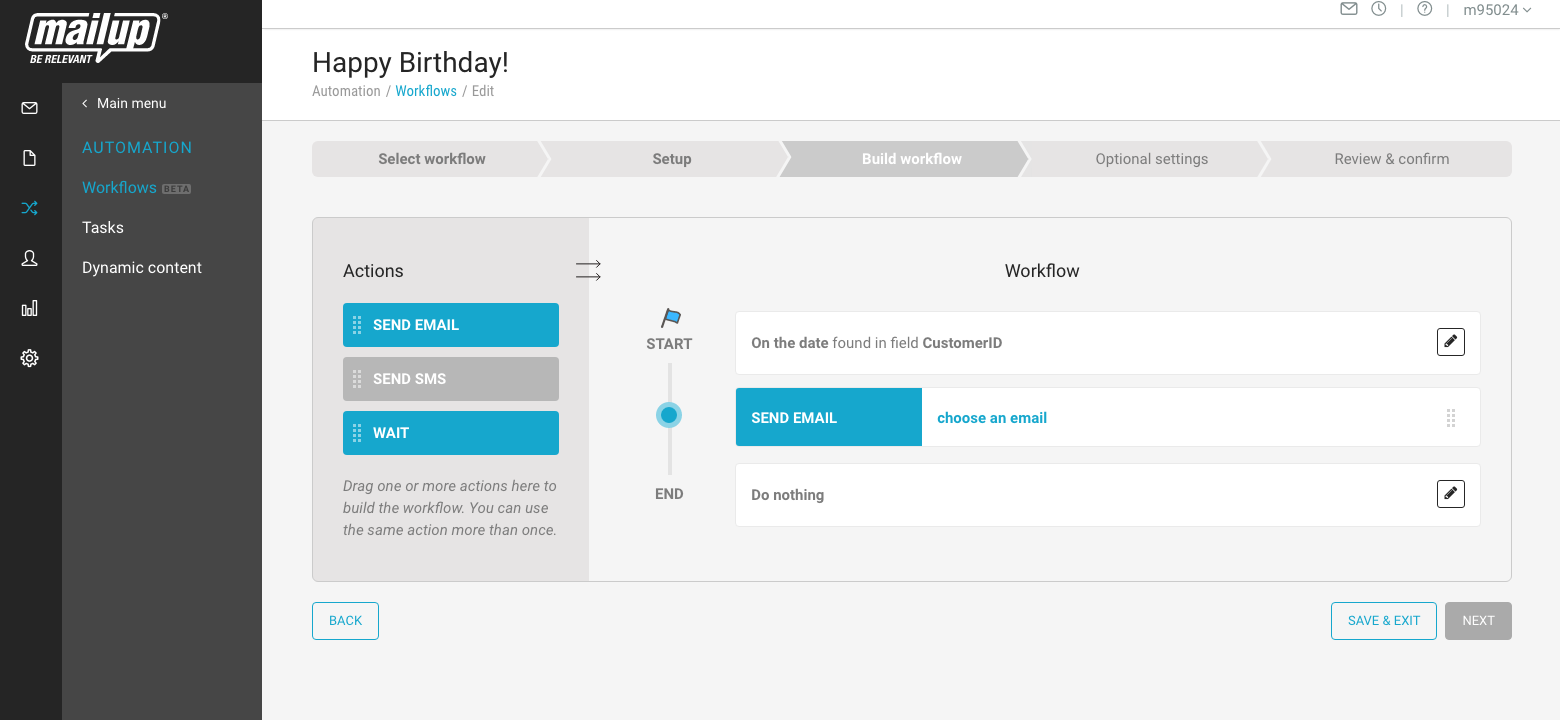
4. Define workflow options
Thanks to the optional settings, you can:
- Further segment recipients who receive the workflow
- Choose a time for sending messages
- Insert restrictions by date and time.

5. Confirm and activate
The last steps are:
- Checking the workflow’s settings
- Changing them if necessary
- Deciding whether to save or activate the workflow
6. Check the statistics
Once the workflow has been set up and begins working, you can check the performance of each step at any time, in real time. This is a brand new feature that includes:
- The data for each message sent in the workflow
- The aggregate data of the entire workflow’s performance
- The dates of the workflow’s first and last operation
- The ability to view statistics regarding individual recipients by filtering emails or SMSs.
This information offers the immense advantage of allowing you to accurately evaluate the performance of each step of the workflow in a timely manner to check if the messages are triggered correctly. If something got stuck, where did it stop? Is there a weak subject that is affecting openings? Or perhaps incorrect conditions have been set?
Conclusions
Marketing Automation offers an exceptional opportunity to any size company. It allows you to improve customer experience, send more pertinent and timely communications relating to each user’s behaviors and interests, thus maximizing your return on investment in each individual channel.
